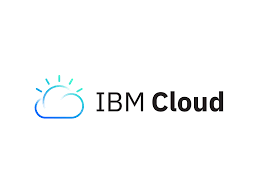By: Waqas Bin Khursheed
Tik Tok: @itechblogging
Instagram: @itechblogging
Quora: https://itechbloggingcom.quora.com/
Tumblr: https://www.tumblr.com/blog/itechblogging
Medium: https://medium.com/@itechblogging.com
Email: itechblo@itechblogging.com
Linkedin: www.linkedin.com/in/waqas-khurshid-44026bb5
Blogger: https://waqasbinkhursheed.blogspot.com/
Read more articles: https://itechblogging.com
**Introduction: Understanding the Power of Amazon Athena**
Amazon Athena, an interactive query service, revolutionizes the way we analyze data. It enables users to perform SQL queries directly on data stored in Amazon S3. This innovative approach bypasses traditional data warehousing bottlenecks, offering scalable and cost-effective data analysis solutions.
**Core Features: Unleashing Amazon Athena's Capabilities**
Amazon Athena stands out for its serverless design, eliminating infrastructure management. Users benefit from Athena's ability to query data in various formats, harnessing the flexibility and power of Amazon S3 for data storage. This integration simplifies data analysis, making it accessible and efficient.
Explore more AWS articles
**Getting Started: Your First Steps with Amazon Athena**
Setting up Amazon Athena requires no initial setup or infrastructure provisioning. Users simply point Athena to their S3 data location, define the schema, and start querying. This ease of use accelerates the journey from data to insights, empowering businesses to make data-driven decisions faster.
**Advanced Techniques: Elevating Your Athena Queries**
Advanced users can optimize their Athena queries for performance and cost. Techniques such as partitioning data, compressing files, and converting to columnar formats enhance query speed and reduce costs. Leveraging these practices, businesses can achieve high-performance data analysis at a fraction of the cost.
**Use Cases: Amazon Athena in Action**
Amazon Athena excels in diverse scenarios, from log analysis to business intelligence. It enables organizations to quickly access and analyze large datasets, providing insights that drive strategic decisions. Whether for financial forecasting or customer behavior analysis, Athena offers a versatile tool for data-driven exploration.
Read also AWS Virtualization
**FAQs: Navigating Common Queries about Amazon Athena**
-
**What makes Amazon Athena stand out in data analysis?**
Amazon Athena stands out in the realm of data analysis for several reasons, making it a preferred choice for many organizations looking to analyze their data efficiently and effectively. Here are some key features and advantages:
-
**Serverless Query Service**:
Athena is a serverless query service, which means you don't need to manage any underlying infrastructure. There's no need to set up or manage servers, and you pay only for the queries that you run. This eliminates the overhead of managing infrastructure, making it easier and more cost-efficient to analyze data.
Read more AWS S3
-
**Direct SQL Queries on Data Stored in Amazon S3**:
Athena allows you to run SQL queries directly on the data stored in Amazon S3. This is particularly beneficial for organizations that store large amounts of data in S3, as it removes the need to move or transform data before analysis. This capability supports a wide variety of data formats, including CSV, JSON, ORC, Avro, and Parquet.
-
**Easy Integration and Compatibility**:
Athena is integrated with the AWS ecosystem, making it easy to use alongside other AWS services such as Amazon QuickSight for visualization, AWS Glue for data cataloging, and Amazon S3 for data storage. This seamless integration simplifies the architecture for data analytics projects.
-
**Pay-per-Query Pricing Model**:
The pricing model of Athena is based on the amount of data scanned by each query. This pay-per-query model can be cost-effective for businesses that need to run complex queries infrequently or have varying analytics needs.
Learn also AWS Key Pairs
-
**Built-in Security Features**:
Athena incorporates AWS’s robust security mechanisms, including encryption at rest and in transit, fine-grained access control via AWS Identity and Access Management (IAM), and the ability to query data securely across different AWS accounts.
-
**Performance Optimization Features**:
While Athena is designed for quick data analysis, it also offers features for performance optimization, such as partitioning and columnar data formats, which can significantly speed up queries and reduce costs by scanning less data.
-
**Wide Range of Use Cases**:
From log analysis and quick ad-hoc queries to complex join queries across multiple datasets, Athena can handle a wide range of data analysis tasks. Its versatility makes it suitable for various industries and applications, including web analytics, financial analysis, and more.
-
**No Data Loading Required**:
Since Athena queries data directly in S3, there's no need for data loading or ETL (Extract, Transform, Load) processes. This significantly reduces the time and effort required to prepare data for analysis.
These features make Amazon Athena an attractive tool for data analysts, data scientists, and businesses looking to leverage their data with minimal overhead and maximum flexibility.
-
**How does Amazon Athena integrate with other AWS services?**
Athena seamlessly integrates with AWS services like AWS Glue for data cataloging, enhancing its data querying capabilities.
-
**What are the cost implications of using Amazon Athena?**
With Athena, users pay only for the queries they run, making it a cost-effective option for businesses of all sizes.
Read more AWS DDoS Attacks
-
**Can Amazon Athena handle real-time data analysis?**
Amazon Athena is designed primarily for interactive querying of data stored in Amazon S3 using standard SQL. It is serverless, so there's no infrastructure to manage, and you pay only for the queries you run. Athena is excellent for analyzing large-scale datasets stored in Amazon S3, performing ad-hoc analysis, and generating reports.
However, Athena is not inherently designed for real-time data analysis. It's optimized for scenarios where data is not changing rapidly, such as log analysis, data exploration, and historical data querying.
For real-time data analysis, services like Amazon Kinesis, which can collect, process, and analyze real-time, streaming data, are more suitable. Amazon Kinesis enables you to build applications that respond quickly to new information.
To perform real-time analysis on data that flows into Amazon S3, you might set up a pipeline using Amazon Kinesis for real-time data ingestion and processing, and then use Athena for querying historical data that has been processed and stored in S3. This combination allows you to handle both real-time and historical data analysis within the AWS ecosystem.
-
**How secure is data queried with Amazon Athena?**
Athena ensures data security through AWS's comprehensive security measures, including data encryption and access control.
-
**What formats does Amazon Athena support for data querying?**
Athena supports various data formats, including JSON, CSV, and Parquet, offering flexibility in data analysis.
-
**Can I use Amazon Athena for complex data analysis?**
Yes, Amazon Athena can be used for complex data analysis. It is an interactive query service that makes it easy to analyze data in Amazon S3 using standard SQL. Athena is serverless, so there is no infrastructure to manage, and you pay only for the queries that you run. This makes it both cost-effective and scalable for analyzing large datasets.
Here are some key features and considerations that make Athena suitable for complex data analysis:
-
**SQL Support**:
Athena supports ANSI SQL, which allows you to perform complex joins, window functions, and arrays. This enables you to run sophisticated analytical queries on your data.
-
**Integration with Other AWS Services**:
Athena integrates well with other AWS services, such as AWS Glue for data catalog services, Amazon QuickSight for visualization, and Amazon Redshift for more heavy-duty data warehousing tasks. This ecosystem allows for a comprehensive data analysis pipeline.
-
**Performance**:
While Athena is powerful for ad-hoc queries, its performance can be optimized by structuring your data into formats like Parquet or ORC and by partitioning your data. This can significantly reduce the amount of data scanned per query, thereby speeding up analysis and reducing costs.
Learn about AWS Security
-
**Scalability**:
Being serverless, Athena scales automatically with the size of your data and the complexity of your queries. You don’t need to worry about provisioning resources.
-
**Use Cases**:
Athena is suited for a wide range of complex analysis tasks, including log analysis, real-time analytics, data discovery, and more. Its versatility makes it a good choice for businesses with diverse analytical needs.
-
**Security and Compliance**:
Athena integrates with AWS Identity and Access Management (IAM) for fine-grained access control to your data, and is compliant with various certifications and standards, ensuring that your data analysis practices meet security requirements.
While Athena is powerful and flexible, it's also important to consider the specific requirements of your analysis to determine if it's the best fit. For extremely large-scale, complex analytics where performance is a critical factor, combining Athena with other AWS data warehousing and analytics services might be necessary.
-
**How does Athena handle large datasets?**
Athena's integration with Amazon S3 enables efficient querying of large datasets, leveraging the scalability of cloud storage.
-
**Is there a limit to the number of queries I can run with Athena?**
There is no upper limit to the number of queries, making Athena suitable for high-volume data analysis tasks.
-
**How do I optimize my queries in Amazon Athena for better performance?**
Optimizing queries involves techniques like partitioning data and using columnar formats, which improve performance and reduce costs.
-
**Can Athena be used for data visualization?**
Yes, Athena can be used for data visualization, but not directly. Amazon Athena is an interactive query service that makes it easy to analyze data in Amazon S3 using standard SQL. It's serverless, so there is no infrastructure to manage, and you pay only for the queries that you run.
For data visualization using Athena, you would typically leverage integration with business intelligence (BI) tools or data visualization platforms. Here's how it usually works:
-
**Query Data with Athena**:
First, you use Athena to query your data stored in Amazon S3. Athena supports complex analysis and joins, allowing you to prepare and transform your data as needed for visualization.
-
**Connect to a Visualization Tool**:
Tools such as Amazon QuickSight, Tableau, Looker, or Microsoft Power BI can connect directly to Athena. These tools use Athena as a data source, enabling you to create interactive visualizations, dashboards, and reports.
-
**Visualize and Analyze**:
Once connected, you can use the BI tool's features to visualize your data. This can include creating charts, graphs, maps, and other visual elements to help analyze your data and gain insights.
-
**Share Insights**:
These visualization tools often offer collaboration features, allowing you to share your findings with others, embed visualizations in websites, or even automate reporting.
**Steps to Connect a Visualization Tool to Athena**:
- **Amazon QuickSight**:
As an AWS service, QuickSight integrates smoothly with Athena. You select Athena as your data source, choose your database, and then you're ready to create analyses in QuickSight.
- **Tableau, Power BI, and Others**:
For external tools, the process involves setting up an ODBC (Open Database Connectivity) or JDBC (Java Database Connectivity) connection to Athena. You'll need to install the Athena ODBC/JDBC driver, configure the connection with your AWS credentials and Athena settings, and then connect the BI tool to Athena using this setup.
Remember, while Athena facilitates the querying and preparation of data, the actual visualization is performed by the BI or data visualization tool. This combination allows for powerful data analysis and visualization capabilities without the need for significant infrastructure management.
**Conclusion: The Future of Data Analysis with Amazon Athena**
Amazon Athena represents the future of data analysis, offering powerful, flexible, and cost-effective solutions. As businesses continue to generate vast amounts of data, Athena's role in transforming this data into actionable insights will











